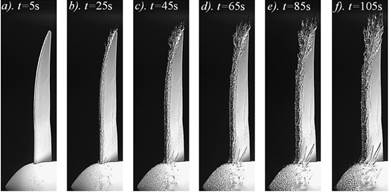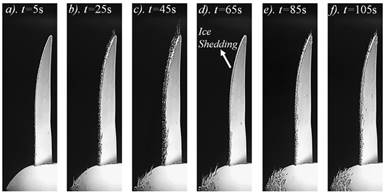The build-up of ice on the wings and propellers of an aircraft, drone or wind turbine results in reduced lift or increased consumption. Ice formation may be actively and passively combated. It’s recently been shown that making the surface superhydrophobic in certain weather conditions can counteract this ice formation.
Ice build-up is a problem in many sectors and has consequences for the operation of all kinds of systems in various sectors, ranging from aviation to wind energy. Superhydrophobic surfaces could offer a solution here. A recent experimental study of the wettability effects on the dynamic process of ice accretion at the surface of a drone propeller showed that making that surface superhydrophobic under certain weather conditions can prevent this ice formation.
The figure below shows the effect that a superhydrophobic surface versus a hydrophilic surface has on the ice formation on the drone's propeller. With a hydrophobic surface there is less ice accretion. This is due to the fact that the drops partially bounce off. The ice that still forms shakes off the propeller more quickly than on a hydrophilic surface.





